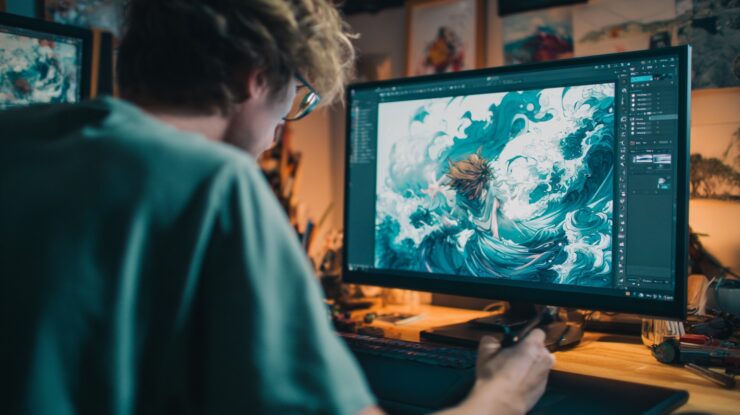Modern artists and public figures shape their image through talent supported by powerful creative technologies and strategic systems.
Today’s influential figures operate as tech-driven image architects, building visual identities, managing reputations, and producing art through advanced digital methods.
Let’s take a peek.
1. Digital Art Software
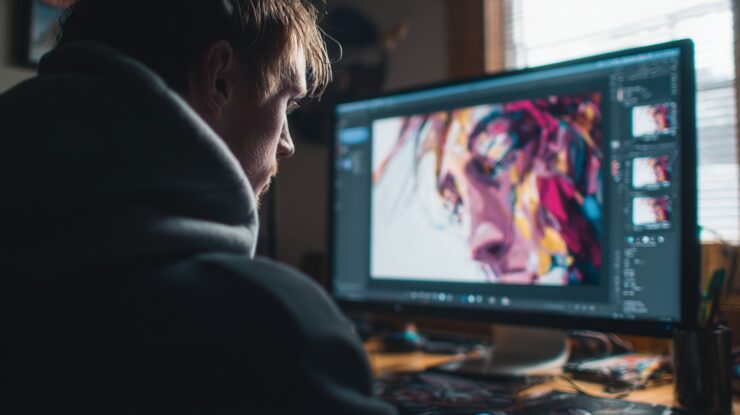
Digital creation relies heavily on advanced programs that simulate classic artistic materials with impressive accuracy.
Photoshop, Illustrator, Procreate, and Painter give creators an expressive range through refined brush systems and realistic texturing tools.
Artists use these platforms to shape illustrations, branding assets, album covers, and inventive visuals for online engagement.
Many public figures entering digital collectibles need polished artwork that fits their identity, so digital software becomes a key partner in crafting consistent aesthetics.
Why are these tools so useful to the creators:
- crafting concept sketches that capture early ideas
- developing professional-grade poster designs
- shaping stylized portraits for campaigns
- creating graphics for animated assets
Growing demand for digital visuals motivates creators to explore every feature, resulting in highly detailed imagery tailored to their stylistic preferences.
2. High-Performance Hardware
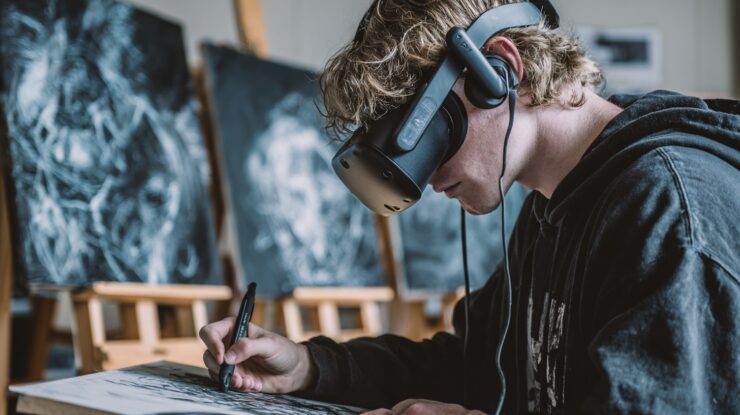
Creative professionals depend on advanced hardware that translates physical gestures into responsive digital output.
Tablets with pressure-sensitive pens, powerful styluses, and VR headsets bring artists closer to their ideas through tactile control.
Wacom devices, iPads paired with precision pens, and immersive headsets support sculpting, modeling, and rehearsal inside digital spaces.
Artists often seek enhanced control, so some tasks are outlined clearly to show how these devices elevate their work:
- rendering precise brush strokes
- shaping 3D objects with hand movements
- drawing fluid lines that respond to pressure and tilt
- rehearsing performances inside virtual environments
Such equipment supplies speed, accuracy, and flexibility, giving creators room to refine concepts without limits tied to traditional materials.
3. Identity Crafting and Personal Branding
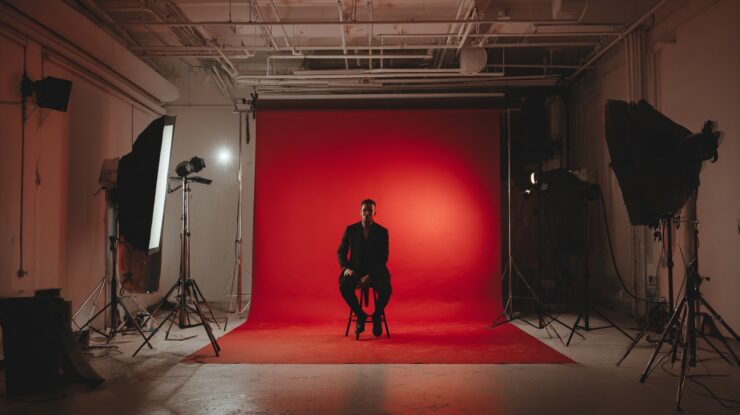
Public figures invest significant energy in shaping a persona that feels deliberate, recognizable, and aligned with their long-term goals.
A foundational element of this process is imagery. It often begins with a strong photograph, one that captures the desired tone and emotional direction of the brand.
Choosing the right setting, supported by high-quality backdrops for photography, helps establish the mood, whether it leans sophisticated, bold, minimalistic, or approachable. The visual tone set at this earliest stage becomes the reference point for all future creative choices.
To refine these visuals, professionals rely on advanced editing software. Tools like Capture One or Adobe Lightroom allow photographers and creative teams to manipulate color grading, lighting, and texture so the final images match the brand’s intended aesthetic with precision and consistency.
Style guides, often built in platforms like Frontify or Notion, define visual direction, typography, color systems, and tone, ensuring coherence no matter how many people contribute to the brand.
Voice profiles, created with the help of services like Writer.com or Grammarly Business, establish the communication style.
Throughout the process, designers and strategists develop names, visual identities, and brand assets using tools such as Adobe Creative Cloud, Canva Pro, or Figma, building the long-term recognition that strong branding depends on.
Meanwhile, creative teams use moodboards and shoot-planning platforms like Milanote to align on themes, wardrobe, color palettes, and environmental cues before any public-facing materials are produced.
4. AI-Assisted Creativity
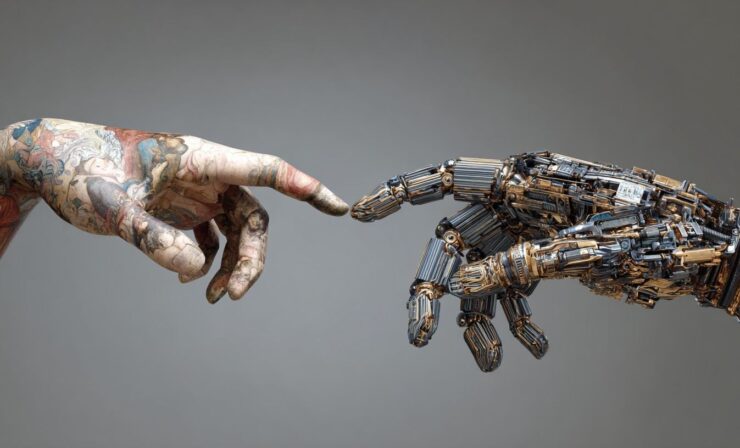
Modern creators increasingly collaborate with AI to unlock fresh visual and audio concepts.
Generative models, neural networks, and algorithmic design tools assist in producing textures, imaginative compositions, or stylized effects that spark fresh directions.
Artists experiment with AI to accelerate idea generation, while public figures use it to shape promotional imagery or interactive fan experiences.
Visual tools like DALL·E, Midjourney, and Adobe Firefly allow artists to generate concept art or transform text prompts into detailed visuals.
Platforms such as Runway ML and Prisma help turn photos and videos into stylized renderings, while Canva’s AI tools suggest layouts and color palettes aligned with creative aims.
Musicians and performers explore new sound possibilities through algorithmic audio platforms like AIVA, Boomy, and Google Magenta, which reshape tones, patterns, and ambient layers to craft unique sonic experiences.
Some users benefit from:
- Generating concept drafts within minutes using tools like Notion AI or ChatGPT
- Transforming photos into stylized renderings with DeepArt or Runway ML
- Suggesting color combinations aligned with creative aims through Canva AI
- Shaping experimental sound layers or atmospheres using AIVA or Amper Music
5. Public Relations Technology and Strategy
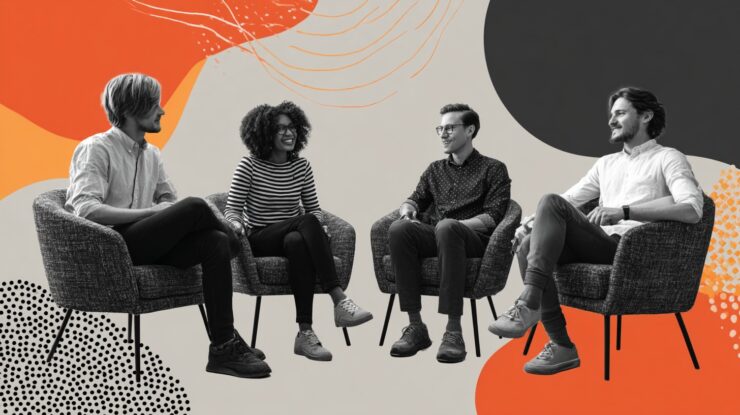
Modern reputation management increasingly relies on advanced tools such as Brandwatch, Meltwater, and Talkwalker, which offer analytics platforms and sentiment tracking capabilities to monitor public perception.
These allow PR teams to scan conversations across social and traditional media, identify potential risks early, and respond with well-informed, coordinated strategies.
Communication dashboards from platforms like Sprout Social, Cision, and Prowly streamline campaign management, enabling teams to guide messaging and maintain a consistent brand voice across channels.
In times of crisis, real-time monitoring tools such as Dataminr and Signal AI help detect emerging issues quickly and support agile decision-making.
Structured planning, supported by data insights from tools like Onclusive and Notified, helps high-profile individuals and organizations craft compelling narratives, manage crises, and build strategic partnerships.
Public identity is strengthened when communication strategies are shaped by real-time intelligence and refined through measurable impact.
6. Cloud-Based Collaboration and Storage

Creative projects grow more efficiently through cloud platforms that support real-time cooperation.
Creative Cloud, Google Drive, and Dropbox allow artists, editors, and producers to share files instantly, revise assets, and manage large libraries without physical limitations.
Remote teams collaborate smoothly through synchronized versions that keep every contributor aligned.
There are numerous reasons why cloud-based technology has a massive impact in this case:
- sending updated designs within seconds
- securing large video files with encrypted storage
- reviewing drafts without scheduling delays
- managing project folders across devices
Cloud systems reduce friction and keep creative momentum steady in fast-paced environments.
7. Blockchain and NFTs

Digital creators rely on blockchain systems to support ownership, distribution, and monetization of artistic assets.
Platforms such as Ethereum, the foundational blockchain for most NFTs, enable transparent verification and secure authorship, preventing unauthorized duplication and reinforcing creative control.
Artists and public figures use platforms like OpenSea, SuperRare, and Foundation to present and sell digital items with confidence, knowing that each piece carries a traceable, authenticated origin.
Marketplaces allow for the release of artwork, collectibles, or exclusive digital experiences, often as limited editions tied to personal branding.
Smart contract functionality, integrated into platforms such as Rarible and Zora, automates compensation, ensuring creators receive royalties not only at the initial point of sale but also during secondary market transactions between collectors.
Public figures often turn to platforms like Nifty Gateway to create high-profile NFT drops that strengthen fan engagement.
The Bottom Line

Modern creative success depends on a sophisticated toolkit powered by digital artistry, advanced hardware, AI support, strategic PR systems, and new monetization technologies.
Artists and celebrities use these resources to shape identity, produce compelling work, and navigate public attention with precision.

